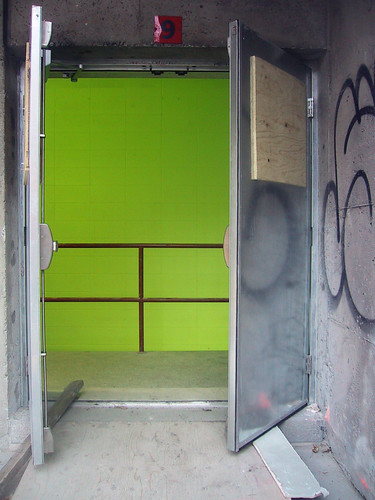How to read images
November 16th, 2008 by bruno boutotJason Kottke calls it “the most information-rich paragraph I’ve ever read online…it’s like an entire film class in 12 lines”. It’s from a column named How to read a movie written by the great movie critic Roger Ebert: #
In simplistic terms: Right is more positive, left more negative. Movement to the right seems more favorable; to the left, less so. The future seems to live on the right, the past on the left. The top is dominant over the bottom. The foreground is stronger than the background. Symmetrical compositions seem at rest. Diagonals in a composition seem to “move” in the direction of the sharpest angle they form, even though of course they may not move at all. Therefore, a composition could lead us into a background that becomes dominant over a foreground. Tilt shots of course put everything on a diagonal, implying the world is out of balance. I have the impression that more tilts are down to the right than to the left, perhaps suggesting the characters are sliding perilously into their futures. Left tilts to me suggest helplessness, sadness, resignation. Few tilts feel positive. Movement is dominant over things that are still. A POV above a character’s eyeline reduces him; below the eyeline, enhances him. Extreme high angle shots make characters into pawns; low angles make them into gods. Brighter areas tend to be dominant over darker areas, but far from always: Within the context, you can seek the “dominant contrast,” which is the area we are drawn toward. Sometimes it will be darker, further back, lower, and so on. It can be as effective to go against intrinsic weightings as to follow them. #C’est une citation extraite de l’article Comment lire un film, par le grand critique de cinéma Roger Ebert. Jason Kottke dit: “Je n’ai jamais lu sur le Web un paragraphe contenant autant d’information. C’est un cours complet de cinéma en 12 lignes.” #
Point par point: #
Right is more positive, left more negative. #
Movement to the right seems more favorable; to the left, less so. #
The future seems to live on the right, the past on the left. #
The top is dominant over the bottom. #
The foreground is stronger than the background. #
Symmetrical compositions seem at rest. #
Diagonals in a composition seem to “move” in the direction of the sharpest angle they form, even though of course they may not move at all. #
Therefore, a composition could lead us into a background that becomes dominant over a foreground. #
Tilt shots of course put everything on a diagonal, implying the world is out of balance. I have the impression that more tilts are down to the right than to the left, perhaps suggesting the characters are sliding perilously into their futures. Left tilts to me suggest helplessness, sadness, resignation. Few tilts feel positive. #
Movement is dominant over things that are still. #
A POV above a character’s eyeline reduces him; below the eyeline, enhances him. #
Extreme high angle shots make characters into pawns; low angles make them into gods. #
Brighter areas tend to be dominant over darker areas, but far from always: Within the context, you can seek the “dominant contrast,” which is the area we are drawn toward. Sometimes it will be darker, further back, lower, and so on. It can be as effective to go against intrinsic weightings as to follow them. ##








